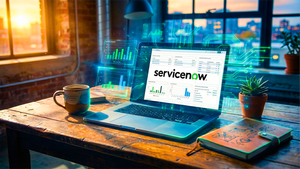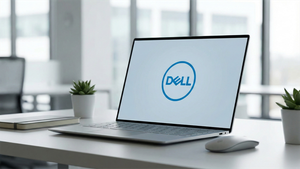 Photo from Unsplash
Photo from Unsplash
Originally Posted On: https://www.goanswer.io/warm-transfer-vs-cold-transfer/
In the fast-paced world of customer service, every second and every interaction count. The choice between warm transfers and cold transfers can make a significant difference in the overall customer experience. But how do you know which method to use? In this blog post, we’ll explore the pros and cons of warm transfer and cold transfer, discuss their impact on customer satisfaction, and provide insights on finding the right balance for your business. Are you ready to elevate your customer service game? Let’s dive in!
Short Summary
- Understanding the differences between warm and cold transfers is essential for optimizing customer service performance.
- Warm transfers provide personalized and efficient service that helps to create an improved customer experience, while cold transfers can cause customers dissatisfaction.
- Balancing warm and cold transfers by establishing clear guidelines & implementing the right technology is key to optimize customer experience & agent productivity.
Understanding Warm and Cold Transfers
Not all call transfers are the same, and the choice between cold and warm transfers depends on the situation. Both methods have their advantages and disadvantages when it comes to customer experience. In the realm of cold and warm transfers, warm transfers involve agent-to-agent communication and providing context before transferring the call, whereas cold transfers are direct and automated. Warm transferring can enhance customer satisfaction by reducing frustration and providing a personalized experience, while cold transfers can help lower average hold times and improve customer satisfaction in cases of high call volumes or urgent issues.
Understanding the nuances of these transfer methods is crucial for optimizing your call center’s performance and delivering the best possible customer experience. In the following sections, we will delve deeper into the definitions, benefits, and best practices of warm and cold transfers.
Warm Transfer Defined
A warm transfer is when the original agent introduces the customer to the new agent and provides relevant information before transferring the customer call. Warm transfers are recommended in scenarios where an agent requires assistance from a colleague to address a customer’s query, when a particular request is received, when a caller is directed to an incorrect department, or when offering an incentive to customers or prospects.
The primary advantage of a warm call transfer is that it offers a seamless transition of information between agents, thus minimizing customer dissatisfaction and call duration. Additionally, warm transfers guarantee that the customer is connected with the appropriate individual, fostering customer loyalty and satisfaction, and adding a personal touch to the customer service experience, which is beneficial for both the customer and the call center operator.
Cold Transfer Defined
Cold transfers occur when a call is directly transferred to another agent or department without any prior communication or context. These transfers are sometimes referred to as blind transfers and can be employed when dealing with high call volumes or addressing pressing matters. However, cold transfers may not always provide the most relevant customer experience, leading to customers having to repeat information to different agents, which can be an inconvenient and frustrating experience, especially when they end up in the wrong department. To avoid this, it’s essential to properly manage transfer calls, ensuring a seamless and efficient process for both agents and customers.
Although cold transfers can be advantageous in certain situations, it is important to carefully consider their use. In the event that the intended agent is unavailable during a cold transfer, the call will be redirected to voicemail automatically. To manage incoming calls effectively with a cold transfer, it is recommended to prioritize top-rated agents as the initial point of contact.
The Role of Warm Transfers in Customer Experience
Warm transfers play a crucial role in enhancing customer experience by providing personalized and efficient service. This personalized approach not only makes customers feel valued and appreciated, but also ensures a smooth transition between agents, ultimately reducing customer frustration and eliminating the need for customers to repeat themselves.
Let’s take a closer look at two key aspects that contribute to the positive impact of warm transfers on customer experience: personalized greetings and smooth information transfer.
Personalized Greetings
Personalized greetings in customer service can result in increased customer loyalty, retention, satisfaction, and sales. Warm transfers enable customer service agents to welcome customers by name, express gratitude for their patience, and deliver personalized service. This facilitates customers feeling appreciated and valued, which can result in increased customer loyalty and satisfaction.
On the other hand, cold transfers prevent customer service agents from offering personalized greetings by name, expressing gratitude for customers’ patience, or providing tailored service. This can result in customers feeling disgruntled and disregarded, which can lead to decreased customer loyalty and satisfaction.
Smooth Information Transfer
Efficient information transfer in customer service can result in quicker resolution of customer queries, an improved customer experience, and a decrease in the potential for miscommunication and mistakes. Warm transfers facilitate a smooth transition by furnishing the subsequent agent with the necessary information to offer timely service, saving time that could otherwise be spent on reiterating the issue.
In contrast, cold transfers do not provide the receiving agent with any background information, which can lead to a disjointed and frustrating experience for the customer. By ensuring a seamless transfer of information between agents, warm transfers reduce customer frustration and call duration, thereby improving overall customer experience.
When to Use Cold Transfers: Situations and Benefits
Cold transfers can be beneficial in certain situations, such as handling high call volumes or escalating urgent issues. By quickly routing calls to available agents or departments, cold transfers can help manage high call volumes and improve customer satisfaction in cases where time is of the essence. However, it is important to ensure that the transfer process is carried out efficiently and that the receiving agent is prepared to handle the call.
In the following subsections, we will explore two scenarios where cold transfers can be advantageous and how they can improve call resolution efficiency.
Handling High Call Volumes
Cold transfers can help manage high call volumes by quickly routing calls to available agents or departments using a desk phone. This expeditious approach can aid in managing high call volumes, making it a valuable tool for call center agents to efficiently handle customer calls.
However, there are potential drawbacks to utilizing cold transfers in managing high call volumes, such as a sub-optimal customer experience due to the lack of context provided during the transfer. Skills-based routing, IVR systems, and automated call routing can serve as viable alternatives to cold transfers when managing high call volumes, as they can help ensure that calls are routed to the most suitable agent or department, thereby enhancing customer experience.
Escalating Urgent Issues
Cold transfers can be used to escalate urgent issues to higher authorities or specialized departments without delay. This allows for a more efficient call resolution in situations where time is of the essence and a swift response is necessary. Cold transfers can be particularly advantageous in emergencies or when call centers are experiencing a high volume of calls.
To ensure the successful use of cold transfers in addressing urgent issues, it is important to confirm that the customer is aware of the transfer, that the receiving agent is ready to manage the call, and that the customer’s expectations are managed accordingly.
Warm Transfer Best Practices
Following best practices for warm transfers can further improve customer experience and call resolution efficiency. These best practices include obtaining caller permission before initiating a warm transfer, preparing the receiving agent with the necessary information and context, and managing customer expectations throughout the transfer process.
Let’s take a closer look at these practices and how they contribute to the success of warm transfers.
Obtaining Caller Permission
Always ask for the caller’s permission before initiating a warm transfer during a live phone call to maintain a smooth and personal customer service experience. Gaining caller permission before transferring a call is essential to guarantee that the caller is agreeable to speaking with the intended recipient and helps to prevent any potential legal complications.
When obtaining caller permission, it is necessary to inform the caller of the transfer, provide the transfer information, request permission to initiate the transfer, and await their response. This not only ensures a seamless experience for the customer, but also protects your business from potential legal issues.
Preparing the Receiving Agent
Prepare the receiving agent with necessary information and context to ensure they can effectively address the customer’s issue. In order to ensure an efficient resolution, the receiving agent should be provided with the caller’s name, the reason for the call, and any pertinent information that may assist with addressing the caller’s issue.
This preparation not only helps the receiving agent better understand the customer’s needs, but also allows for a smoother transition between agents, ultimately reducing customer frustration and improving overall call resolution efficiency.
Managing Expectations
Manage customer expectations by apologizing for hold times and reassuring them that their concerns will be addressed. Expressing gratitude to customers for their understanding and willingness to wait is an effective way to thank them for their patience.
Additionally, provide customers with information regarding the transfer process, including who they will be speaking to and the anticipated wait time, to guarantee that the customer is aware of the potential wait time and maintain a positive customer experience.
Cold Transfer Alternatives and Automation
Cold transfer alternatives and automation can help streamline the call transfer process while maintaining a positive customer experience. Skills-based routing and interactive voice response (IVR) systems can be employed in a contact center to provide personalized greetings and direct calls to the relevant department or call center agent when human assistance is not available.
In the following subsections, we will delve deeper into these cold transfer alternatives and automation solutions, specifically focusing on the comparison of vs cold transfer.
Skills-Based Routing
Skills-based routing is a strategy utilized in contact centers to assign incoming cases to an agent or team member based on their skills and expertise. This approach ensures customers are directed to the most suitable support agent for their needs, thereby enhancing customer satisfaction.
The process of skills-based routing involves analyzing the customer’s needs and matching them to the most suitable agent, ensuring customers are directed to the most knowledgeable agent for improved call resolution efficiency. This can be a powerful alternative to cold transfers, providing a more personalized and efficient customer experience.
IVR Systems
Interactive Voice Response (IVR) systems enable callers to interact with a computerized system using voice or keypad inputs, providing automated options and information for customers. IVR systems can offer tailored greetings and direct calls to the pertinent department or agent when human aid is not accessible.
By implementing these alternatives and automation solutions, businesses can streamline the call transfer process while maintaining a positive customer experience. This ensures that customers are connected to the right person in a timely and effective manner, improving overall satisfaction and call resolution efficiency.
Balancing Warm and Cold Transfers: Finding the Right Mix
Finding the right balance between warm and cold transfers is essential for optimizing customer experience and agent productivity. By creating and adhering to guidelines regarding when to use warm or cold transfers, depending upon the call’s nature and the company’s relationship with the customer, businesses can ensure an optimal customer experience and efficient call handling.
In the following subsections, we will discuss the importance of establishing clear guidelines and implementing the right technology to find the perfect mix of warm and cold transfers for your business.
Establishing Clear Guidelines
Establish clear guidelines for when to use warm or cold transfers based on the nature of the call and the company’s relationship with the customer. By doing so, businesses can guarantee that transfers are utilized correctly and uniformly, leading to improved customer experiences and more streamlined handling of calls.
To ensure optimal customer experience and agent productivity, it is essential to create and adhere to guidelines regarding when to use warm or cold transfers, depending upon the call’s nature and the company’s relationship with the customer.
Implementing the Right Technology
Implement the right technology, such as integrated systems and call routing options, to ensure seamless and efficient call transfers. This can include automated call distribution (ACD) systems, interactive voice response (IVR) systems, and skills-based routing, all of which can help route calls to the most suitable agent or department and provide a more personalized customer experience.
By optimizing the transfer process and conveying relevant data, technology can facilitate making the transfer process smoother and less exasperating for the caller. In doing so, businesses can strike the perfect balance between warm and cold transfers for optimal customer experience and agent productivity.
Why Let Go Answer Handle Your Warm Transfers
Are you seeking to elevate your business’s customer service standards? Discover the advantages of utilizing Go Answer’s virtual receptionist and call answering services, tailored to deliver a personalized and inviting experience for your customers. In today’s fiercely competitive market, exceptional customer service is paramount, and our specialized solutions are designed to help you achieve just that.
Go Answer understands the importance of making a positive first impression. When your customers call, they expect a welcoming and prompt response. Our virtual receptionists are extensively trained professionals who excel in creating a friendly and inviting atmosphere for each caller. With their warm and professional demeanor, they ensure that every interaction upholds your brand’s image with the utmost care.
Setting us apart from the rest is our emphasis on warm transfers, a key feature of our service. If a caller requires assistance beyond our receptionist’s capabilities, they seamlessly transfer the call to the appropriate department or individual within your organization. This personalized approach ensures that your customers are connected with the right person, avoiding any frustration or delays. This level of attention leaves a lasting positive impact on your customers, enhancing their overall experience with your company.
Beyond improving customer satisfaction, implementing Go Answer’s virtual receptionist and call answering services can significantly enhance your business’s efficiency and productivity. By outsourcing your call handling needs to our experienced team, your in-house staff can concentrate on core tasks and strategic initiatives, leading to increased productivity and revenue generation.
Selecting Go Answer as your call answering partner means choosing top-tier customer service. Our unwavering commitment to professionalism, meticulous attention to detail, and seamless warm transfers will undoubtedly elevate your brand’s reputation and foster greater customer loyalty. Allow us to manage your calls, while you focus on expanding your business and delivering exceptional products or services. Partner with Go Answer today and experience the transformative power of a virtual receptionist.
Understanding the differences between warm and cold transfers is crucial for delivering a seamless and personalized customer experience. By implementing best practices, leveraging the right technology, and finding the perfect balance between warm and cold transfers, businesses can enhance customer satisfaction, improve call resolution efficiency, and boost agent productivity. It’s time to take your customer service game to the next level and make every interaction count!
Frequently Asked Questions
What is an example of a warm transfer?
An example of a warm transfer is when a customer calls with an inquiry about a product or service, and the initial employee provides helpful details before transferring the caller to the appropriate specialist. By doing so, the caller receives an improved customer service experience.
What is a warm transfer vs a cold transfer?
Warm transfers involve passing callers to an agent with knowledge of the context and reason for the call, while cold transfers typically leave customers repeating their issue or purpose for the call to a new person.
By providing a warm transfer, you help ensure that customers receive the assistance they need in a timely manner.
What is a warm transfer in childcare?
A warm transfer in childcare is when a customer has called looking for assistance and the initial person answering their call takes the initiative to make sure they get help from someone who can provide what they need. It involves transferring the call over to the correct person or department so that the customer receives the best possible service.
This type of transfer is important because it ensures that the customer is getting the help they need in a timely manner. It also helps to build trust between the customer and the company, as the customer knows that their needs are being taken seriously.
What is the main difference between warm and cold transfers?
When making a warm transfer, agents can provide context to the receiving agent before passing on the call, which allows for a smoother customer experience compared to cold transfers where the caller is simply passed onto another agent with no prior information.
Cold transfers can be jarring for customers, as they are suddenly speaking to a new agent with no prior context. Warm transfers, on the other hand, provide a more seamless transition, as the receiving agent is already aware of the customer’s needs and can provide a more tailored experience.
When should warm transfers be used?
For the best customer experience, warm transfers should be used when an agent requires assistance from a colleague to address a customer’s query, when a particular request is received, when a caller is directed to an incorrect department, or when offering an incentive to customers or prospects.
This helps to ensure that callers are provided with a positive and seamless customer service journey.
Recommended Reading
Looking for more information related to this topic? Try one of the pages linked below:
Virtual Receptionist / Call Answering Services
Learn about our 24/7 live virtual receptionist services, and how we offer more than just traditional call answering services:
- Interested in outsourcing your live web chat service? Look no further.
- Read about the differences between our AI-enhanced virtual receptionists and other vendors’ AI call answering service.
Call Answering Solutions for Every Industry
Go Answer offers virtual receptionist services tailored to every industry. Here are a few of our most common use cases:
- Answering services for small business
- Call center solutions for small business
- Real estate answering service
- Property management answering service
- Contractor answering service
- Plumbing answering service
- Elevator answering service
- Funeral home answering service
Don’t see your business listed? We can develop a custom call answering solution with you.
Enterprise Solutions
Our call center solutions are an important part of any company looking into business process outsourcing. Learn more about our enterprise contact center solutions, including:
- Contact center outsourcing
- Customer service outsourcing
- eCommerce customer service outsourcing
- Cloud call center solutions
- Hosted contact center solution
- Omnichannel contact center
- Inbound call center service
Looking for more information? Read up on recent contact center automation trends, including:
- Contact center management
- AI contact center solutions
Integrations
Learn more about Go Answer’s software integrations, specifically:
- Contact center CRM software
- Salesforce call center integration
Healthcare Answering Services
Go Answer specializes in healthcare scenarios that require a HIPAA compliant answering service, such as:
- Virtual medical receptionist
- Medical answering service
- Physician answering service
- Dental office answering service
Legal Intake Services
Our legal virtual receptionists offer various legal intake services, including:
- Contact center for lawyers
- Legal intake specialist service





